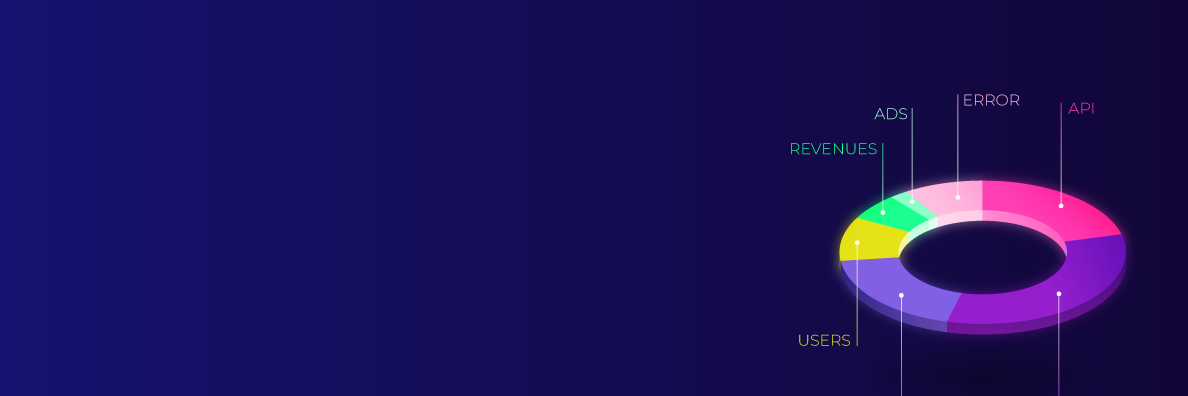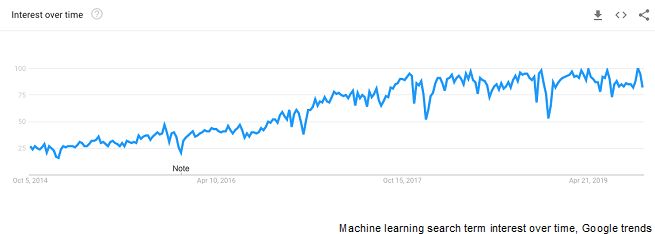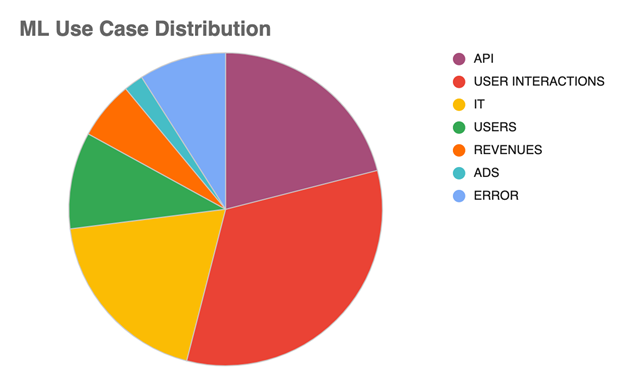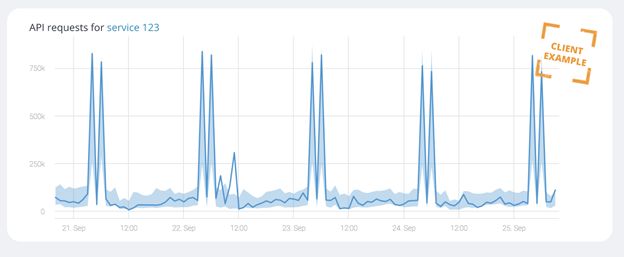It’s no secret that machine learning (ML) has experienced tremendous growth and adoption over the last few years. And why not? This exciting technology has enabled us to utilize the power of machines for a wide variety of applications and industries.
From image processing to predicting to medical diagnosis, ML has begun to reshape the way we live. In the technology world, it enables software applications to become more accurate in predicting outcomes, without the need to be explicitly programmed.
At Anodot we serve some of the world’s top teams and constantly learn how they leverage our technology. We continually talk with them to learn the challenges they face. And we collect feedback on the value they see from our state-of-the-art, automated anomaly detection-based alerts and dashboard capabilities.
Changes in Paradigm
Before diving into our actual use cases for ML in analytics and monitoring, let’s take a look at some of the history and evolution of ML, and how it’s affected the work process paradigm.
Proactive vs. Reactive
First and foremost, ML completely changes how teams operate. We started in a world where analytics teams were approached with requests for new dashboards and asked to analyze trending issues (usually customer complaint related). We’ve now moved to a world where analytics and monitoring teams constantly scan all of the data an organization collects, and identify key issues before they really surface.
Analytics and Monitoring are Closer Together
Traditionally, analytics and monitoring were divided. Analytics was more oriented towards business and executives, and monitoring was more application performance and system-health oriented. Those days are gone. The same data sources (logs or live data streams) are often used for both monitoring and analytics, and both monitoring and analytics teams value the proactive approach that ML provides.
Shorter Time to Detection and Resolution
Because data is scanned in full and issues are surfaced in real-time, ML can scan multiple data sets, correlate technical and business issues together and run effective root cause analysis. Once machine insights are presented to someone, it’s quite simple to detect the actual root cause and run a remediation process. As AIOps slowly becomes the new norm, the remediation action is in many cases triggered automatically by alerts. In this way, issues are fixed before users even notice and overall user satisfaction trends up.
The Actual Use Cases: What are We Learning?
These are just some of the many benefits and changes that ML brings to the work process paradigm. But what are the actual use cases? What does ML automatically learn and analyze?
The chart below gives us an indication. It’s based on actual metrics and alerts analyzed by ML, and represents information from hundreds of companies in various verticals.
Use Case #1: User Behavior Analysis
The top topic analyzed is user behavior, with companies exploring how users are using their products. When there’s a change in usage patterns it usually implies an interesting issue; for example, the number of logins:
Many customers want ML to learn their login behavior, as you can see in the example above. ML technology can learn daily or weekly patterns, such as understanding that the number of logins is higher during specific hours of the day or days of the week, and that users are sleeping at night. A sudden drop in login attempts may imply a user experience problem, whereas a spike in login attempts may imply a bot attack.
Many customers also monitor conversion rates from login start to login end, or simply monitor login failures. There are many other user behavior related examples such as monitoring the conversion funnel, interactions with features in the product and the like.
Use Case #2: API Analysis
Applications today use multiple internal and external APIs to operate. For example, APIs may be used to return search results from affiliates and vendors in the travel industry and for payment clearance in the e-commerce industry. With these APIs, performance deterioration or failure can cause users to be frustrated and possibly even churn.
Industry leaders usually analyze API requests, responses and errors. ML learns normal behavior, as can be seen in the baseline (shaded area) in the chart above.
Use Case #3: Infrastructure Monitoring
The rise of cloud services has made deployment and the dynamic and automatic nature of servers, nodes and cluster management more complex. It’s becoming increasingly challenging to understand the status, performance and costs of infrastructure. Industry leaders therefore use ML to learn infrastructure status and behavior and identify changes in patterns.
One good example of this is load balancer monitoring. Performances of load balancers are affected by user behavior and other dynamic elements. Machine learning is used to learn and understand normal behavior (see the shaded area in the image below), and detect any change in patterns. Once an anomaly occurs, it’s also automatically correlated to possible related metrics such as users’ behavior or application errors. This helps generate a comprehensive view for the DevOps engineer in charge.
Conclusion
The analytics and monitoring spaces are in the process of another huge revolution to follow and complement the big data revolution. It is truly an exciting time to be part of our industry as these changes take place, and amazing to be able to learn and work with the best in the field.
Are you using ML for other use cases? Contact us today to tell us how.








